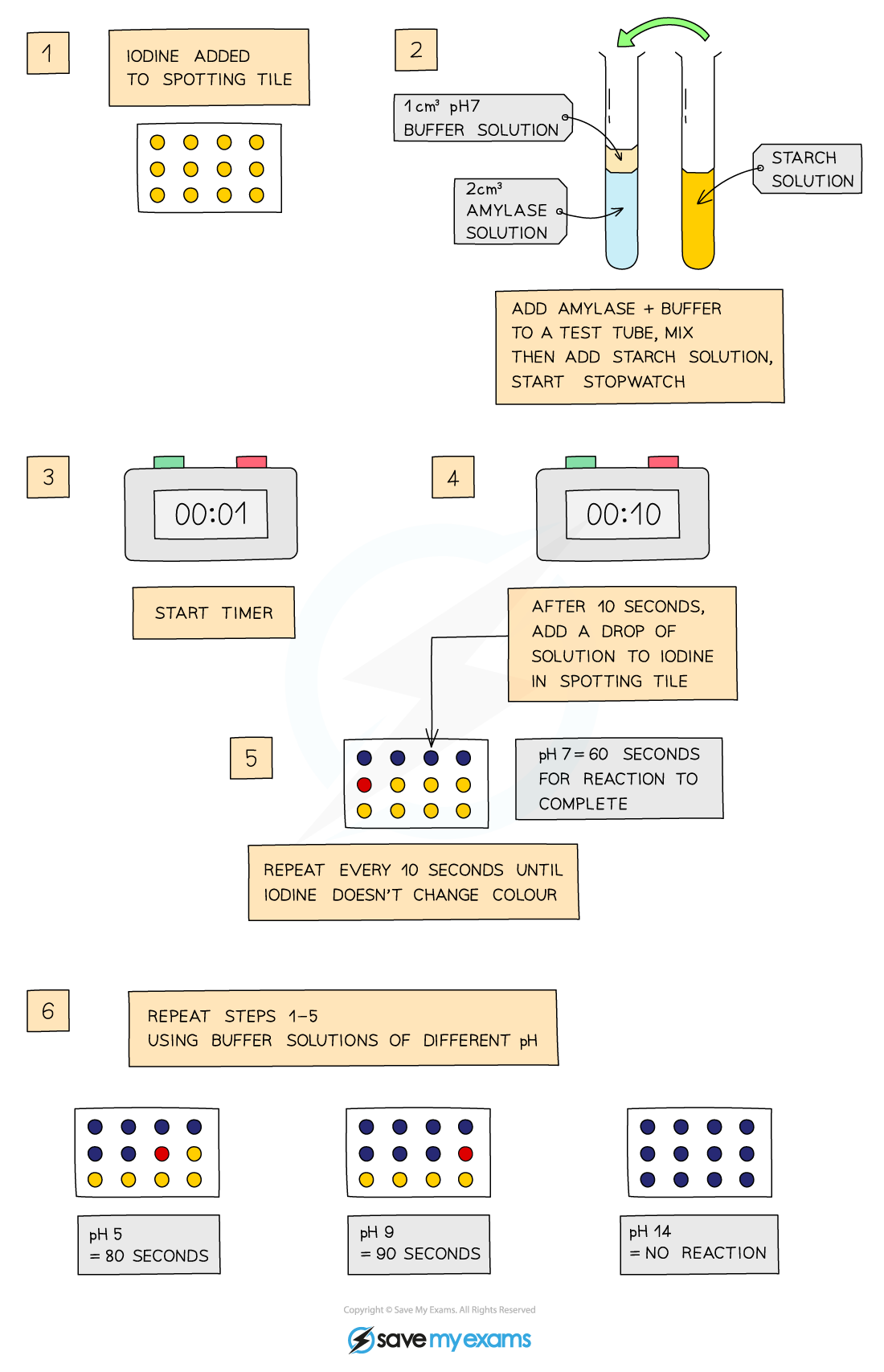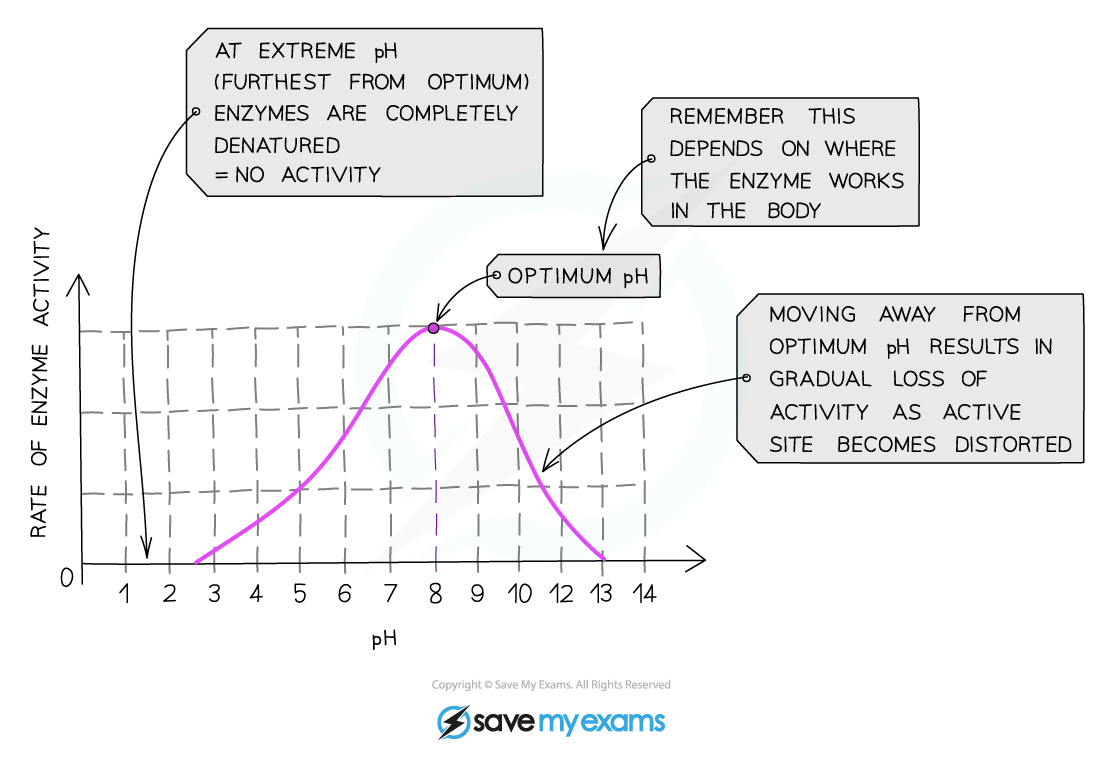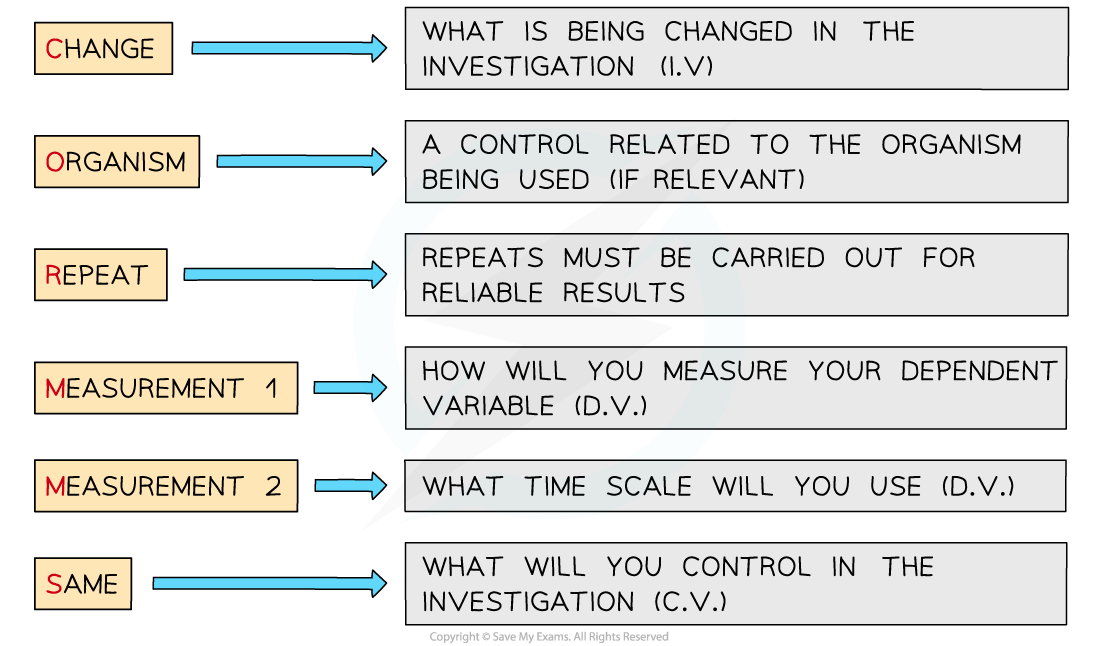Did this video help you?
Practical: Enzymes & pH (Edexcel GCSE Biology: Combined Science)
Revision Note
Practical: Enzymes & pH
- Amylase is an enzyme that digests starch (a polysaccharide of glucose) into maltose (a disaccharide of glucose)
- The effect of different pH levels on the activity of amylase can be investigated
Apparatus
- Spotting tile
- Measuring cylinder
- Test Tube
- Syringe
- Pipette
- Stopwatch
- Buffer solutions
- Iodine
- Starch solution
- Amylase solution
Method
- Add a drop of iodine to each of the wells of a spotting tile
- Use a syringe to place 2 cm3 of amylase into a test tube
- Add 1cm3 of buffer solution (at pH 2) to the test tube using a syringe
- Use another test tube to add 2 cm3 of starch solution to the amylase and buffer solution, start the stopwatch whilst mixing using a pipette
- Every 10 seconds, transfer a droplet of the solution to a new well of iodine solution (which should turn blue-black)
- Repeat this transfer process every 10 seconds until the iodine solution stops turning blue-black (this means the amylase has broken down all the starch)
- Record the time taken for the reaction to be completed
- Repeat the investigation with buffers at different pH values (ranging from pH 3.0 to pH 7.0)

Investigating the effect of pH on enzyme activity
Results and Analysis
- Amylase is an enzyme which breaks down starch
- When the iodine solution remains orange-brown, all the starch has been digested
- This investigation shows:
- At the optimum pH, the iodine stopped turning blue-black and remained orange-brown within the shortest amount of time
- This is because the enzyme is working at its fastest rate and has digested all the starch
- At the optimum pH, the iodine stopped turning blue-black and remained orange-brown within the shortest amount of time
- At higher or lower pH's (above or below the optimum) the iodine took a longer time to stop turning blue-black or continued to turn blue-black for the entire investigation
- This is because on either side of the optimum pH, the enzymes are starting to become denatured and as a result are unable to bind with the starch or break it down
Limitations
- The starch and amylase solutions that need to be used should be placed in a water bath at optimum temperature before being used
- A colorimeter can be used to measure the progress of the reaction more accurately by measuring the absorbance/transmission of light through the coloured solution
- A control of iodine solution would be used for comparison

A graph showing the optimum pH for an enzyme from a region of the small intestine
Applying CORMS to practical work
- When working with practical investigations, remember to consider your CORMS evaluation

CORMS Evaluation
- In this investigation, your evaluation should look something like this:
- C - We are changing the pH of the environment
- O - This is not relevant to this investigation as we aren't using an organism
- R - We will repeat the investigation several times to ensure reliability
- M1 - We will measure the time taken for
- M2 - the iodine to stop turning black
- S - We will control the concentration and volume of the amylase, iodine and starch solution used in the investigation
Examiner Tip
When describing the effect of pH on enzyme activity, it is important to remember that any pH outside of the optimum can lead to the enzyme becoming permanently denatured.

You've read 0 of your 5 free revision notes this week
Sign up now. It’s free!
Did this page help you?
